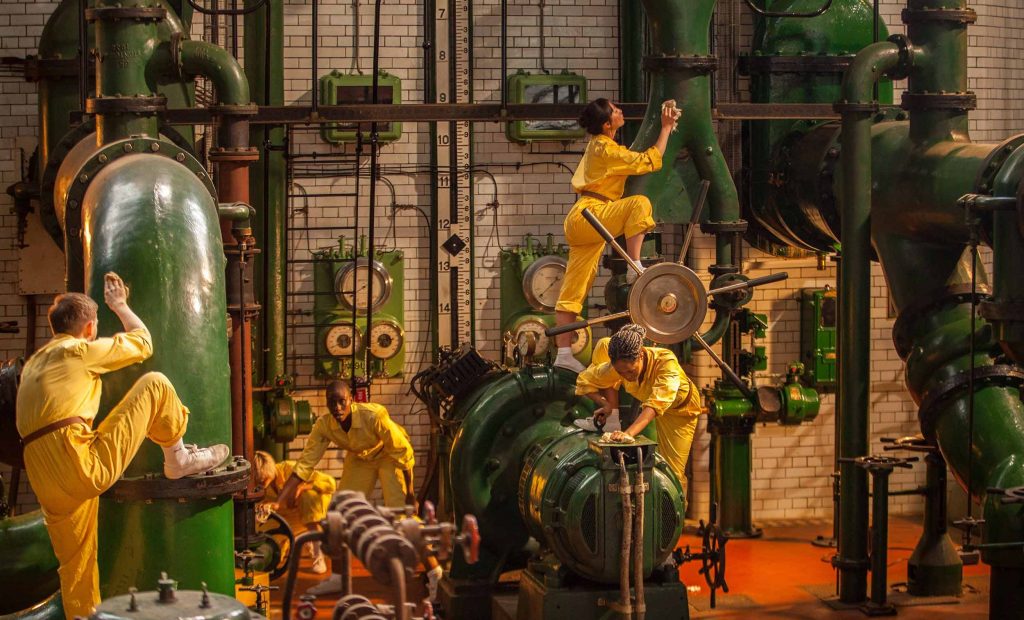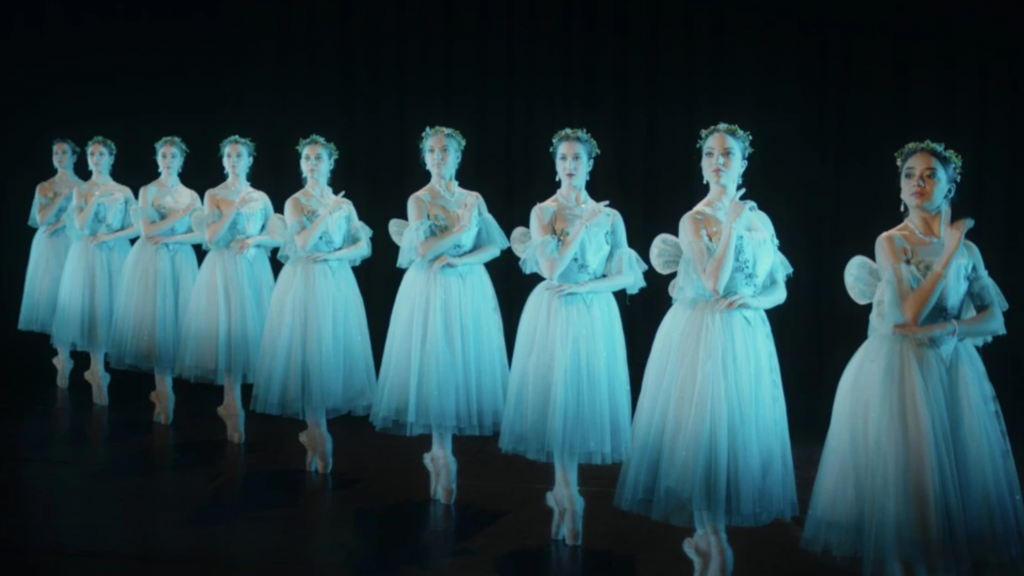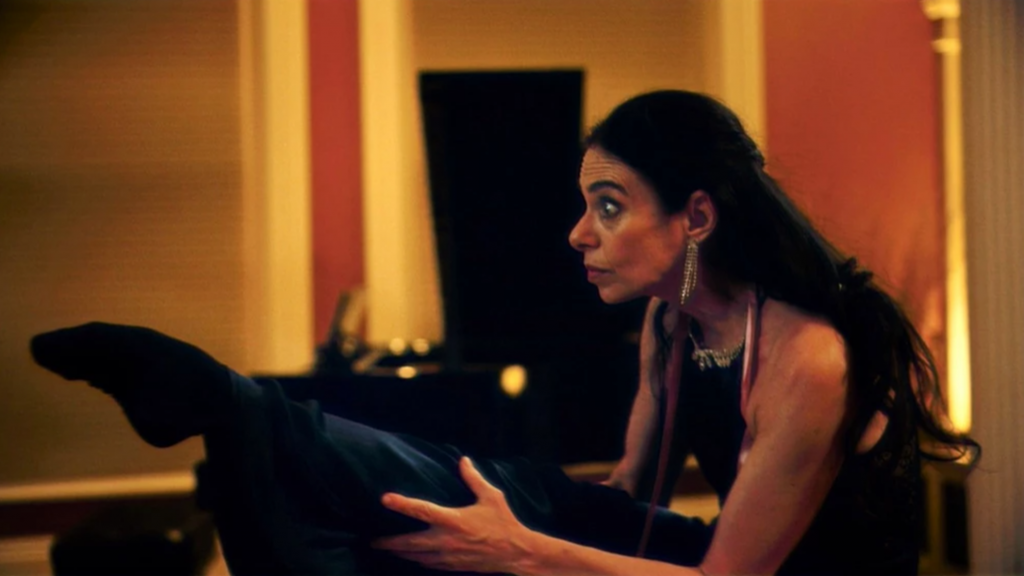Interview with Jess & Morgs – NRFF Artist of the Month
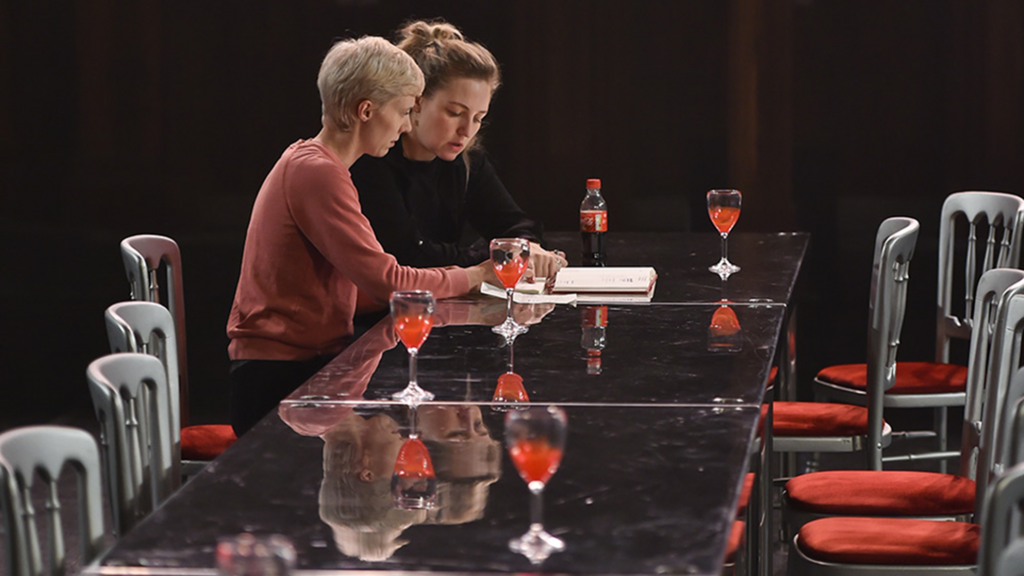
JESS & MORGS are the NRFF Artist of the month (June ’20). This is the third in a series of exclusive interviews by Anya Mani Patel, featuring ’emerging talent’ from film, music and dance.
It brings me great pleasure to announce Jessica Wright and Morgann Runacre-Temple, aka Jess & Morgs, as the NRFF Artist of the Month (June ‘20). Born and bred in the UK, this dynamic duo are taking the world of ballet by storm. Their films have been shown on Channel 4, BBC iPlayer, Canal + and internationally at festivals, including NRFF. Cinderella Games, one of their most recent film collaborations with the English National Ballet was shot inside the Royal Albert Hall, London, and adds a bold, surrealist twist to an original folktale. Jess & Morgs have a particular interest in the dancing camera, the malleability of time through post-production technology, and the use of surrealist imagery and humour to provoke new ways of thinking about dance. Their work is relevant to today, and reaches new audiences. Here, we chat with them about their creative process and latest film releases. Anya Mani Patel
Congratulations on being chosen as the NRFF Artist of the Month (June’ 20). How does it feel?
It is such an honour to be recognised by NRFF as Artist of the Month. We have been working really hard so far this year, creating our first independent film ‘Taglioni’ which has involved a lot of fundraising and grass roots work, with some setbacks along the way – so it feels like such a joy to have the endorsement of such a festival as NRFF. It really gives us the boost and confidence to keep going!
‘Curing Albrecht’ won the award for Best Dance Film at NRFF London 2017
You’re no strangers to NRFF. In fact, you’ve won the award for Best Dance Film twice so far! Can you tell us about that, and what winning these awards has meant to you?
Yes, we won with Curing Albrecht and then Tremble. There is something special about winning at the same festival twice – it makes us realise that there is an audience for our work – and that it’s not just a lucky one off!
Who or what inspires your passion for dance? Where did you complete your training?
We both met whilst we were training at Central School of Ballet back in 2004. We’re both inspired by the physicality of dance, the way it instantly creates a dynamic that is so visceral. We are also very drawn to large group unisons – creating choreographies that function as large moving architectural structures, often created in the space in which they will be performed in.
‘Tremble’ won the award for Best Dance Film at NRFF Amsterdam 2020
How and why did you form this unique creative partnership in film?
The collaboration came about very intuitively, we are best friends and we had just graduated from ballet school and were facing our first summer out on the audition circuit. We started making little videos together in between training to amuse ourselves and keep ourselves busy – and have never stopped.
What inspired your latest film project for the English National Ballet?
The film was a commission from English National Ballet as an engagement project. With the idea to work with a core cast of intergenerational, non professional dancers at the heart of it. For Cinderella Games we cast the net really wide and had a really diverse and exciting cast, ranging from young dancers in their final year at Laban (a vocational dance school) and just about to graduate into professional life, right through to our eldest member of the cast, who was 79! We always end up building storylines around the dancers/actors we work with, so the cast played a huge part in shaping the narrative of the piece.
We were commissioned to respond to the company’s planned production of Cinderella as the film is shown as a curtain raiser in theatres to the ballet. We also had the opportunity to shoot at the Royal Albert Hall. Many of our ideas stem from an exciting location, so we started imagining alternative functions for the Royal Albert Hall other than a performance venue. At the same time we liked the idea of ‘if the shoe fits’ in the Cinderella story. And of course the whole notion of a ‘happy ever after’ being something that could just be arrived at, like winning a competition. So Cinderella Games was a sort of collision of all these ideas.
The story doesn’t really follow anything from the original tale. We have a lead female protagonist (Cinderella) who enters a competition to be the ‘Next Cinderella’. It’s not a romantic story, it’s more like a riff on certain themes. But it does feature the wonderful ballet score by Prokofiev – which is incredibly cinematic.
‘Cinderella Games’ was filmed inside the Royal Albert Hall
Briefly describe your creative process, from the development stage of a film project like this, to the post production stage.
We usually start off doing a lot of research on the starting point, in this case Cinderella – looking at different iterations of the story, then some long discussions around the themes of the piece and seeing what sticks for us. Usually we arrive at an idea we think is brilliant and then return to it 48 hours later and can’t make head nor tail of it! At the same time, we will start recruiting dancers and searching for exciting locations, sometimes even developing short choreographic ideas – for example we knew we wanted a huge group cleaning scene in the Royal Albert Hall before we had developed the whole story for Cinderella Games, so we went ahead and started developing some phrases to workshop with dancers. So usually we have the conceptual and physical ideas developing alongside each other simultaneously. The hardest thing is finally settling on a storyboard or narrative which we need to share with the rest of the team, as we like to be able to change our mind at the last minute. When you’re working with a large team this isn’t always possible, and you have to commit to ideas.
We then usually create a ‘mock’ version of the film on our iphones, shooting and editing it ourselves. We aim to make this as close as possible to how we want the final film to be as we often give this out to crew to follow as a shot list / storyboard.
‘Cinderella Games’
Matthias Pilz our DOP is quite involved by this point in the process – both in terms of developing the narrative with us and the role of the camera – how objective or subjective it is at any moment, and what it’s doing as a storyteller.
Shooting days – the most exciting of the process. These are always 12 hour days – and we usually have a very ambitious shot list to capture which keeps the stakes high. For some scenes – large choreographic numbers – the dancers are rehearsed to a very high level. For other scenes with principal cast members we just have sketches and we try to keep performances ‘fresh’.
Post production usually starts a few weeks after shooting with making a rough assembly of the film to get an overall shape. The editor will usually do a first pass – we feed back on notes – and then by the second pass we are all together in the room working through the edit. It can be a very long process. Music has been decided by this point and sometimes we are cutting ‘to’ the music, other times a composer will compose to the picture. Finally is the grade – this is where we balance the colours and correct any things that need VFX.
Who composed the music for ‘Cinderella Games’? How important was the music in helping to emote the mood you were seeking?
The music is by Sergei Prokofiev, from his incredible ballet score Cinderella. We were very fortunate that the Prokofiev estate approved the music for the film with the relevant cuts in it. For this project this score was always at the heart of it – it tells the story of Cinderella so brilliantly and has such a magical, eerie atmosphere. We would listen to certain tracks from it over and over to get inspired.
Composer – Sergei Prokofiev
Who are your principal dancers and how did you cast them?
Chihiro Kawasaki and Matthew Hawkins. We’ve worked with these two dancers on previous projects and knew they would be brilliant for the roles. Once we decided we wanted them we knew we couldn’t have anyone else. We like working with dance artists who have real character and who can act, but who are also highly technical, so it’s often quite a long process.
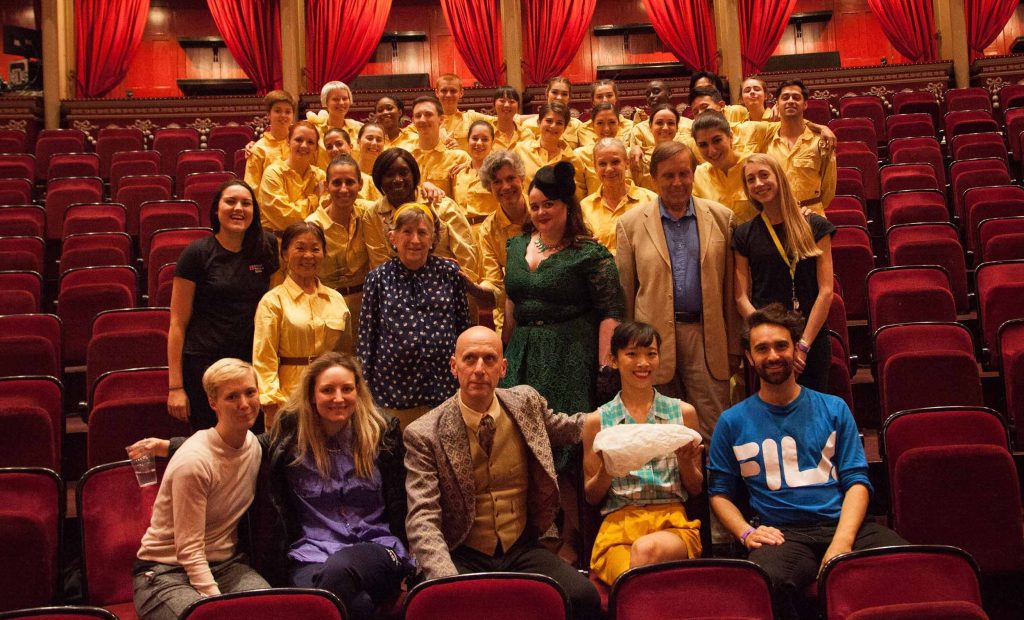
The creative team of ‘Cinderella Games’
The power of movement is beautiful in your work. How do you prepare your dancers to truly embody their characters?
Thank you! We normally always start by getting physically active with them, we often very briefly chat about the story or their character at the first rehearsal but usually the focus is starting to work on some movement. We start working with our dancers usually around the time that we are assembling our mock video – so we will often ask them to start sketching through scenes out of context and filming them straight away. So we don’t enter into lots of chatting – that sometimes just ties us in knots! We usually work more immediately by getting material on its feet. The dancers usually get the gist of the story very quickly and their characters and then are able to help us out devising the roles. That’s how it’s happened up until now, but not by design, so we imagine our process will evolve over time. On our most recent short film ‘An Evening with Taglioni’ we worked with actors and dialogue and the approach was slightly different, we read through the script first.
Explain the difference in perspective when approaching a film set as a dancer, and as a filmmaker.
As a dancer, filming is a real challenge as things move so slowly and there’s always endless waiting around whilst the lights/camera are being set up. This is really challenging for the body because you always want to be warm and ready to go when it’s your moment to get up and perform, but staying at that level of preparedness takes constant work- you can’t just go and hang out for an hour until the crew is ready- you’re constantly warming up! On top of that sometimes your freshest and most spontaneous/embodied performance is the first one, but the camera usually takes longer to perfect it’s movements, so by the time the camera is really at its peak (in the later takes) – your stamina has dropped and you’re past yours!
As a filmmaker you have to have your eye on the ball and be thinking about it from all angles. You’re always on a time crunch and trying to think ahead, there’s never really a second to rest during a shoot day. You need to consider all aspects of the film all the time, and are constantly problem solving the bigger picture as well as the detail of what you’re capturing on screen, whereas as a dancer you are much more focused on yourself and managing your energy and instrument.
What were the major challenges you had to overcome during the production?
For Cinderella Games we chose to shoot in two incredible awe inspiring locations: the Royal Albert Hall and the Kempton Pump Rooms. Both famous examples of breathtaking Victorian Architecture. Both the locations are so rich in terms of narrative context and architecture, that tying them into one short film in a way that was coherent was quite a challenge. Also because both the locations were so busy – the Royal Albert Hall is one of the most active performance venues in London (pre Covid!) – gaining access to them for rehearsals and shooting was not always easy.
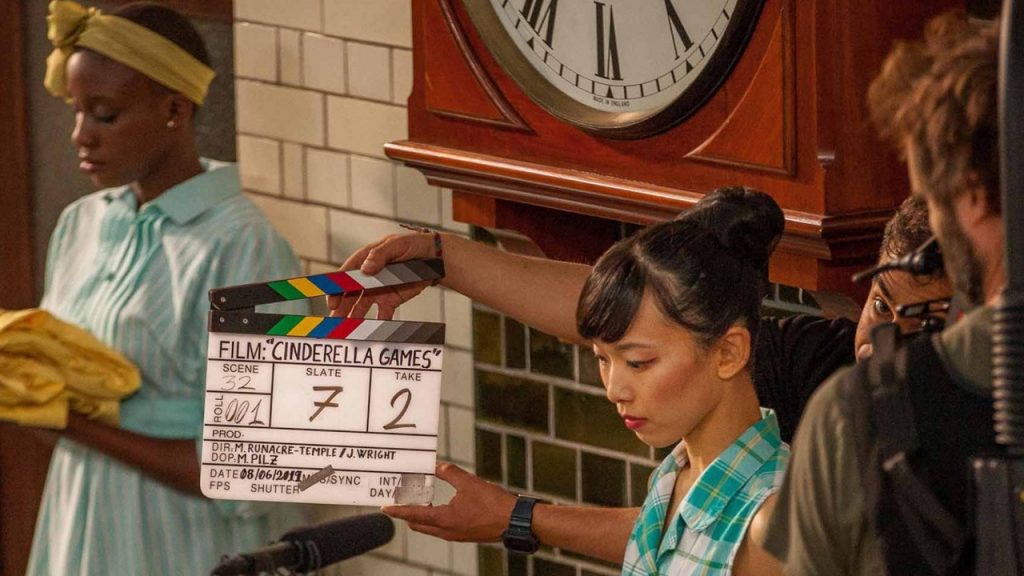
Rehearsals – ‘Cinderella Games’
You have an interest in technology. How can it inspire audiences to think differently about dance, and benefit companies like the English National Ballet?
It really stems from our interest in film and creating work for digital platforms. We are very drawn to the possibilities that technology lends us as a choreographic tool. For example speeding up movement or reversing it – creating a whole new movement language that simply isn’t possible in live work. This movement is specific to film and only achievable with the help of technology – so we’re not using technology for its own sake – which always feels like an add on or quite arbitrary.
In terms of inspiring audiences to feel differently about dance – work made for film can be viewed on people’s phones, tablets, in their own environments. This takes away the barriers that exist when watching live work – needing to be in a theatre. When you take away that barrier dance becomes much more accessible, not reserved only for those with the means and time for buying a theatre ticket. With the current Covid situation, digital work is obviously even more relevant and hopefully one silver lining of this will be that ballet companies continue to focus on reaching broader audiences.
What are your future film aspirations?
Our latest film ‘An Evening with Taglioni’ is new territory for us, working with actors and dialogue in a slightly longer format. We’d love to push the boundaries of this kind of work even further to see if we can venture more into the world of narrative fiction, crossed with dance film. It seems there is a real interest in dance as a subject at the moment, several feature films set in dance environments (Suspiria etc).
‘An Evening with Taglioni’
We would like to increase the scale of our work – eventually making a feature film. We’re not stuck on form though – and feel like our work can be imagined for several different platforms, we get excited about a real variety of things, from making a feature, to large scale music videos or experimenting with VR. So long as we feel that we can innovate with our language, we are interested in creating for that platform.
We also have some very exciting projects planned using film within live performance- our background is theatre – and we’re still very interested in the use of film in this context.
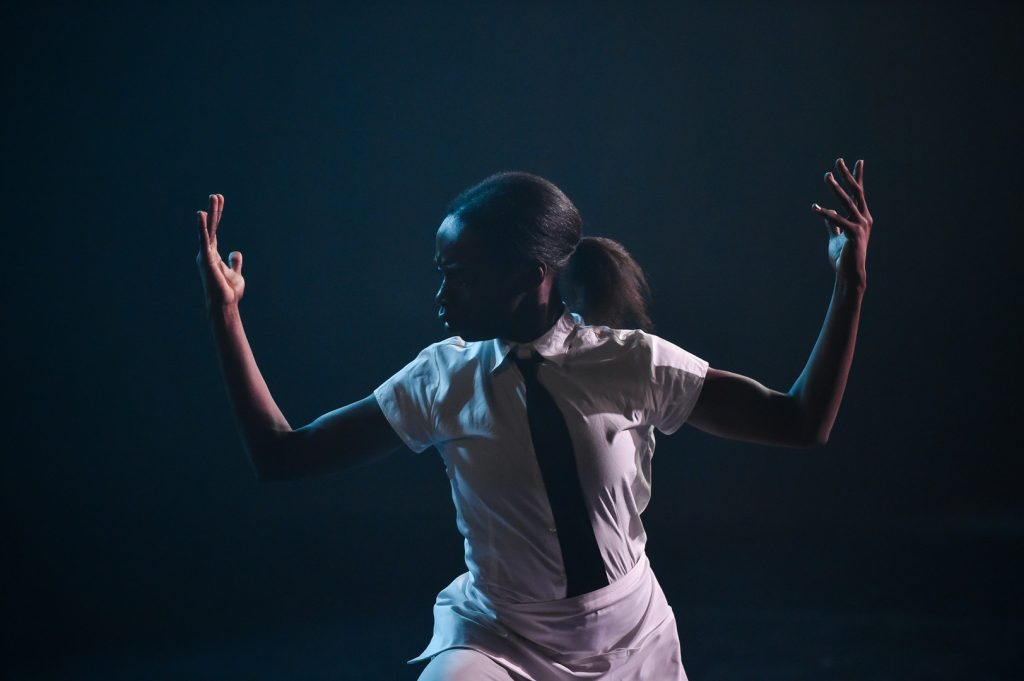
‘Tremble’
NRFF wish super talented Jess & Morgs continued success.
Website ~ Instagram ~ Facebook
We are currently receiving film submissions for all of our festivals. NRFF London 2020 is scheduled to run in mid-September, subject to government guidance regarding the COVID-19 pandemic. Please follow our social media for updates, and the official guidelines for staying safe during this challenging time. Keep your creative spirit alive!

